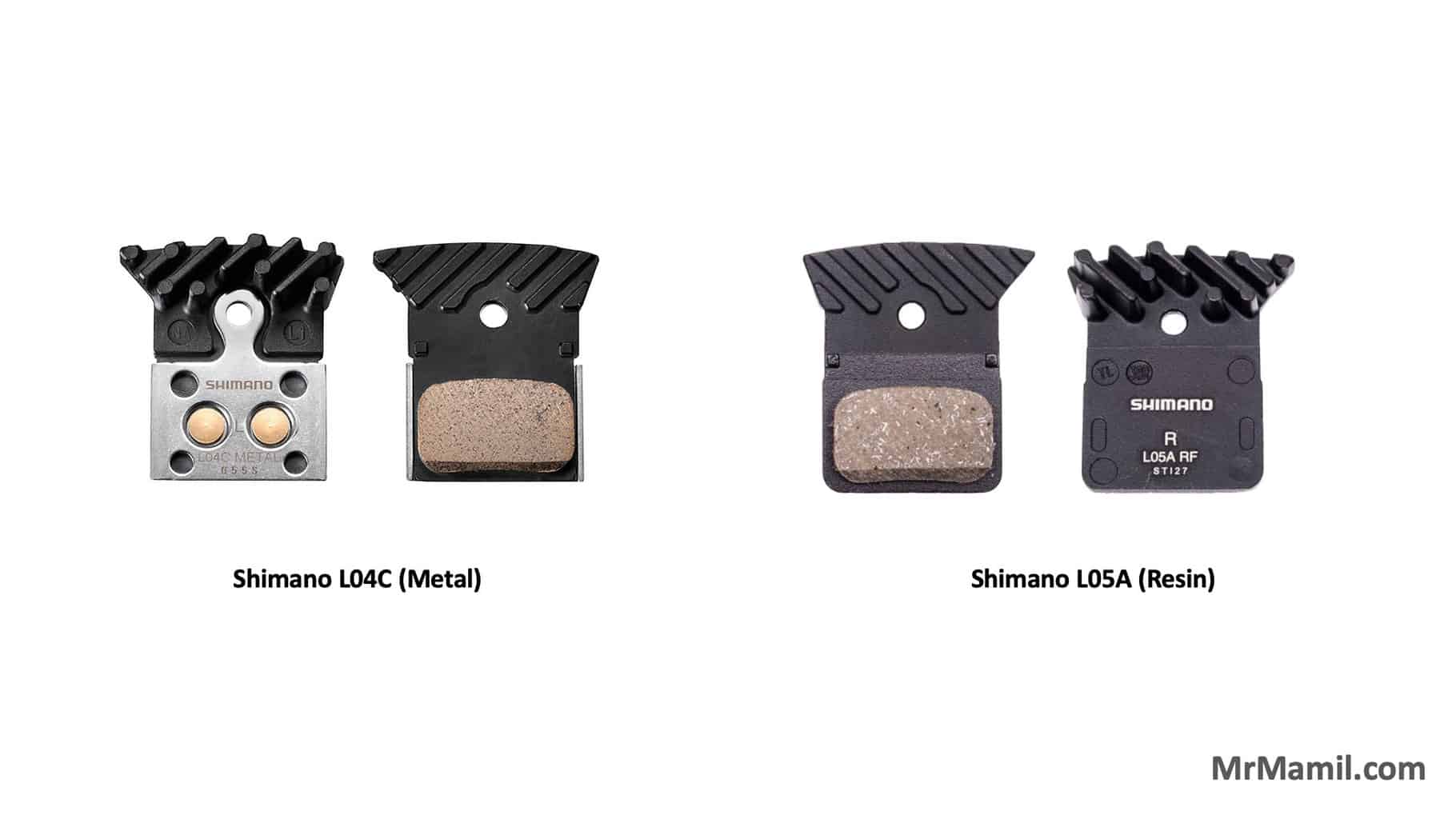
There are two types of brake pads for bicycles available in the market today;
- Metal (sintered)
- Resin (organic)
We will explore the differences between metal and resin brake pads, looking at material composition, noise levels, braking bite and modulation, and the ideal type of application.
Once you understand the differences between metal and resin brake pads, you can decide which suits you.
What are metal brake pads?
Metal brake pads are also called sintered, depending on the manufacturer. They’re made from a mixture of metal particles pressed together. They’re more durable (lasts longer) and versatile (works well across varying riding conditions) than resin brake pads.
What are resin brake pads?
Resin brake pads are also referred to as organic or semi-metal. They’re made from a mixture of organic compounds, such as fibers mixed with metal particles.
The table below summarizes the main differences between a metal and resin brake pad.
| Properties | Metal | Resin |
|---|---|---|
| Other names | Sintered | Organic |
| Compound | Metal | Organic + metal |
| Durability | Lasts longer | Wears faster |
| Noise | Loud | Quiet |
| Bite | Immediate bite | Bite ramps up slowly |
| Modulation | Average | Excellent |
| Heat management | Excellent | Average |
How to choose between metal and resin pads?
All the leading brake pad manufacturers, such as Shimano, SRAM, SwissStop, and Galfer, offer metal and resin pads for the same disc brake caliper model. Once you have figured out your brake caliper model, you’ll need to decide whether it’s metal or resin.
Here are some guidelines you can follow.
Metal (sintered) brake pads
Metal brake pads are more durable and can handle high braking temperatures. They offer much better braking power with an immediate on-off bite. They’re consistent in dry and wet conditions and less prone to glazing.
However, metal brake pads are noisier and will likely wear out the disc rotors faster due to the harder metal compounds. They need to be warmed up before they start to work well. While they work well under high braking temperatures, the excess heat will be transferred to the brake fluid due to the metal compounds.
Mountain bikers and gravel cyclists usually prefer metal brake pads due to the nature of their riding and terrains.
Examples of metal disc brake pads for Shimano :
Resin (organic) brake pads
Resin brake pads are much quieter, excel in dry conditions, and are less susceptible to dust and contaminants. The braking modulation is better but without an immediate on-off bite.
Resin brake pads wear out faster due to their softer compound. They don’t do well in prolonged braking, which results in high temperatures, which leads to brake fade, especially on long, steep descents. Resin brake pads usually cost more than their metal counterparts.
Resin brake pads are commonly found on road bikes.
Examples of resin disc brake pads for Shimano :
In conclusion, when choosing between resin or metal brake pads, it’s essential to consider your specific riding conditions and requirements. Understanding the differences between these two types of brake pads can significantly improve your cycling experience, ensuring you make an informed decision that aligns with your needs.

Alex Lee is the founder and editor-at-large of Mr. Mamil. Coming from a professional engineering background, he breaks down technical cycling nuances into an easy-to-understand and digestible format here.
He has been riding road bikes actively for the past 12 years and started racing competitively in the senior category during the summer recently.